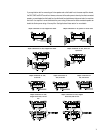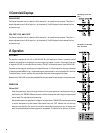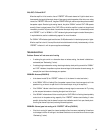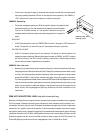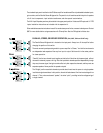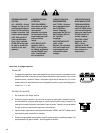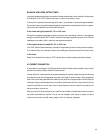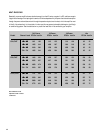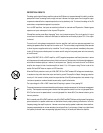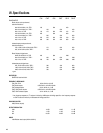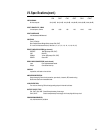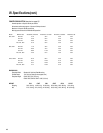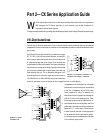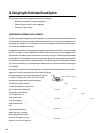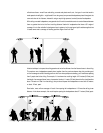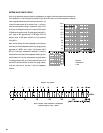
15
PROTECTION CIRCUITS
The design goal in high-efficiency amplifiers such as the CX Series is to increase the amplifier’s ability to deliver
peak power without increasing its size, weight, and cost. However, the higher power flow through the output
components makes effective, responsive protection circuitry absolutely vital. To this end, the design of the CX
series takes a comprehensive approach to protection.
As in all QSC amplifiers, the inputs are resistively buffered for overload and RF protection. Chassis bypass
capacitors at inputs and outputs further improve RF rejection.
CX amplifiers use the proven Ouput Averaging
™
short circuit protection system. This circuit permits full output
current even into resistive or reactive 2-ohm loads, but reduces the current safely by about 75% if the output
is shorted.
Turn-on/turn-off muting keeps transients-both from the amplifier itself and from upstream equipment-from
reaching the speakers when the amplifier is turned on or off. The turn-on delay is approximately three seconds
to allow the power supplies and circuitry to stabilize. Turn-off muting occurs almost immediately after power
is shut off. Muting occurs whether power is turned on and off using the front panel power switch or externally
at the AC source.
Inside a CX6, CX6T, CX12, or CX12T amplifier, an NTC (negative temperature coefficient) thermistor in series
with the power switch and transformer primary limits inrush current. The thermistor initially has a high resistance,
which then diminishes rapidly as it warms, to avoid power loss. Typically, the inrush current of an CX Series
amplifier thus is equal to that of another amplifier of about 1/3 to 1/2 its power rating. The low inrush of the
smaller CX4 and CX4T does not require an NTC thermistor.
When the DC fault protection circuitry of a CX6, CX6T, CX12, or CX12T senses a DC voltage on a channel output,
it actuates a relay which shorts the output and load to ground. The amplifier’s Output Averaging protection
circuitry will limit current to further protect the output devices. If the DC problem persists, that channel will go
into thermal protection mode and should be serviced by a qualified technician.
The output stage of a CX4 or CX4T channel has AC coupling to prevent it from passing DC.
Temperature sensors on the channel heatsinks and the power transformers are part of the thermal management
circuitry. The temperature sensors govern whether the dual-speed fan should run at low or high speed. Below
55½C, the fan runs at low speed; above, it runs at high speed. At or above 85½ C, the channel mutes to go into
thermal protection.
Built-in second-order 50 Hz (CX4T) and third-order 45 Hz (CX6T and CX12T) Butterworth high-pass filtering helps
prevent saturation in speaker transformers on distributed lines by sharply reducing the amount of ultra-low
frequency energy the amplifier puts out. However, some lower-quality speaker transformers have rated low-
frequency responses that do not even extend as low as these filters; if you have any of these in your distributed
line system you should insert corresponding high-pass filtering in the audio path before the amplifier.



